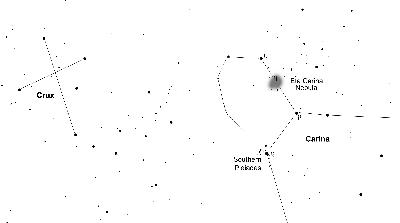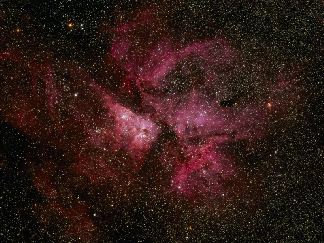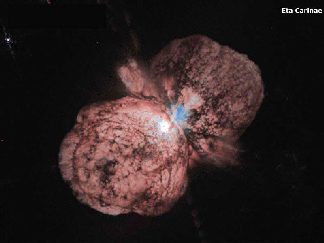Carina
This southern constellation represents the keel of the ancient constellation Argo Navis - ship of the Argonauts. It contains Canopus, the second brightest star in the sky and also the Eta Carina Nebula in which lies the massive star Eta Carina. It is best observed in March to May when Carina comes almost overhead during the evening.
M31 The Eta Carina Nebula and Star Unstable Star and Nebula B M
This nebula is one of the wonders of the southern sky and the largest diffuse nebula in our galaxy. About 260 light years across, it is 7 times the size of the Orion Nebula. The Eta Carina Nebula and Orion Nebula are formally called HII regions as they contain clouds of atomic hydrogen that have been ionised by intense ultra-violet light from the many hot young O-type stars that are found within them - like those that make up the trapezium in the Orion nebula.
It lies in one of the brightest regions of the milky way and is best located by starting at the constellation Crux and moving along the milky way westwards 13 degrees - about 2 and a half binocular fields. On the northern edge of the nebulosity lies the star Eta Carina. It is about 100 times the mass of the Sun and may be 1,000,000 times its luminosity. Highly unstable, it is ejecting material into the surrounding space makeing it highly variable in brightness. In 1843 it became the second brightest star in the sky, but then slowly faded from view, hidden by the ejected shroud of gas, reaching a minimum magnitude of 7.6 in 1968. Its brightness has since been rising and is now ~4.2 - so visible to the unaided eye again. The outburst in 1847 was the biggest explosion that any star has been known to survive and it resulted in two lobes of expanding gas, now about 0.8 light years across, as has been beautifully imaged by the Hubble Space Telescope.
position: 10hrs 43.6m -59deg 52min






